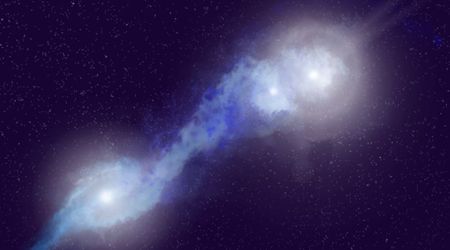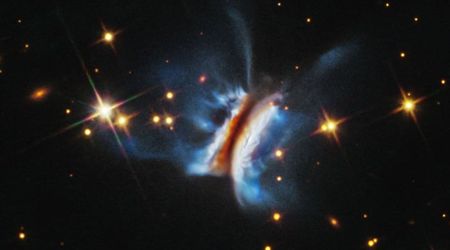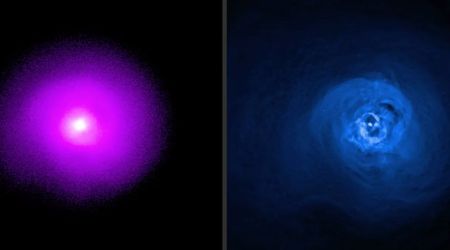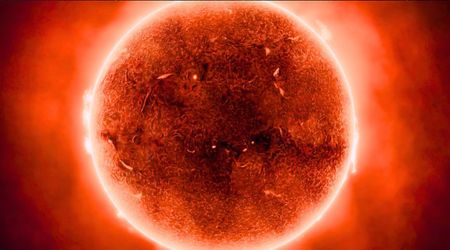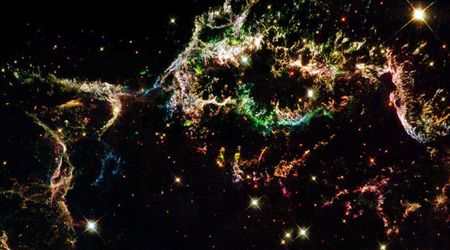NASA's Perseverance rover captures the visual of Martian 'dust devils' devouring each other

NASA’s Perseverance Mars rover captures a Martian dust devil eating a smaller one of its kind in a short video. The visual was a compilation of images taken by the navigation camera on the rover. Made of air and dust, the swirling columns were a common sight on the surface, per NASA. The dust devil being eaten was captured by Perseverance’s science team as part of an imaging experiment to understand various anomalies on the Martian surface. The larger dust devil was around 210 feet wide, while the smaller one was approximately 16 feet wide.

The rover captured these images from a distance of 0.6 miles away, and two other dust devils were seen in the background at the left and center. They were located at the western rim of Mars’ Jezero Crater at a region known as “Witch Hazel Hill.” Mark Lemmon, a Perseverance scientist at the Space Science Institute in Boulder, Colorado, described the anomalies as “fiendish.” “These mini-twisters wander the surface of Mars, picking up dust as they go and lowering the visibility in their immediate area,” he added about the swirling dust devils on the surface.

The spirals were known to either destroy or merge upon contact, and the stronger one consumed the other. A video shared by NASA Jet Propulsion Laboratory (JPL) showed maximum detail and was sped up 30 times, with 21 frames taken six seconds apart. These dust devils were formed by rising and rotating warm air columns on the planet’s surface that rose above the cold air. As the cooler air took its place, a cycle of rotation was formed, and the incoming air increased its speed. This column captured within it the dust particles it picked up, as per NASA.

Katie Stack Morgan, project scientist for the Perseverance rover at NASA’s Jet Propulsion Laboratory in Southern California, stated that dust devils played a critical role in the weather patterns of Mars. “Dust devil study is important because these phenomena indicate atmospheric conditions, such as prevailing wind directions and speed, and are responsible for about half the dust in the Martian atmosphere,” she added. In September 2021, the Mars rover used its onboard SuperCam microphone to record the first sounds of a dust devil on Mars.
Dust devils on Mars were only known to last for 10 minutes, according to Mark Lemmon. “If you feel bad for the little devil in our latest video, it may give you some solace to know the larger perpetrator most likely met its own end a few minutes later,” he exclaimed, as per Newsweek. The purpose of the Mars rover was to scour the planet’s surface and recover any signs of life that could sustain future human life. The Jezero Crater site was around 28 miles wide and was the perfect location to study signs of life, as the region was thought to have been flooded once.

At this location, Perseverance attempted to collect signatures of past life and rock samples that could likely be returned to Earth to be studied. The history of the dust devils dates back to the Viking orbiters that first captured their images in the 1970s. Later missions, like Pathfinder, Spirit, Opportunity, and Curiosity, all recorded their existence, followed by the first audio from Perseverance. Capturing multiple dust devils in a single visual frame was not easy, and this video was an amazing proof of study for scientists due to its relevance in understanding Mars.

